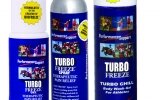- Magazine
- #readityourway
- Weekly Stories
- #shareyourstory
-
Adventure
- Abroad Travelling
- Africa Travelling
- Events
- Expos & Shows
- Festivals
- Fishing
- Free Diving
- Gliding
- Horse Riding
- Inspiring People
- Islands Travelling
- Kite/Windsurfing
- Motorbiking
- Motorised Water Sports
- Mountaineering
- Mountain Biking
- Off-road 4x4
- Off-road Motorbiking
- Paddling
- Performance Driving
- Photography
- Rock Climbing
- Rollerblading
- Sailing
- Scuba Diving
- Skateboarding
- Skydiving
- Snowboarding & Skiing
- Surfing
- Swimming
- Trail Running
- Wakeboarding
- Waveski Surfing
-
Sport
- Adventure Racing
- Fishing
- Free Diving
- Gliding
- Health & Fitness
- Horse Riding
- Inspiring People
- Kite/Windsurfing
- MMA
- Motorbiking
- Mountain Biking
- Multi-sport
- Off-road 4x4
- Off-road Motorbiking
- Paddling
- Performance Driving
- Photography
- Road Cycling
- Road Running
- Rock Climbing
- Rollerblading
- Sailing
- Scuba Diving
- Skateboarding
- Skydiving
- Snowboarding & Skiing
- Surfing
- Swimming
- Rugby
- Trail Running
- Triathlon
- Wakeboarding
- Waveski Surfing
- Lifestyle
- Calendar
Ideas for Racing and Training Snacks
Words: Hannele Steyn
Topic:
Health & Fitness
I have been racing competitively for more than 25 years now. First it was athletics, then biathlon, triathlon, duathlon, road cycling and mountain biking. I am retired from all that now, but I still love to ride my bike and take part in races. I suppose you can never get away from your competitive spirit, but with age comes the wisdom that you must rather try to do your best at the age of 47, than compete with the professionals.

Throughout the years, I have learnt from my mistakes. Being passionate about nutrition, I experimented with different foods to eat while training and racing, and realised that the amount of sugar, colourants and artificial things I was putting into my body when drinking and eating on the bike, was not good in the long term.
The problem is we get so caught up in all the information and advice that is given in the media that we forget about plain, good old-fashioned food. I am not against the energy foods and drinks recommended, but I am against the ones that were not really designed with healthy racers in mind and are flouted as ‘must haves to survive’. So, let’s take a closer look at two of the most commonly consumed energy products available.
Energy bar - Many on the market are just glorified sweets that have added ‘hype’ ingredients to push the price sky high. They are full of sugars, vegetable fat and a few other ‘bad’ ingredients, so select carefully when you buy.
Energy drink - Most of them contain a whole lot of sugars (glucose, fructose, sucrose, malto-dextrose and the like), flavourants and colourants. Remember, I said energy drink, not necessarily a health drink designed to give you sustained energy. This could be an energy drink for a rave party, but because it says energy drink, people are using it for sporting events (I don’t actually know why and where it started?).
So, if you train five days a week and drink an energy drink that contains 200 calories per serving, 10g of sugar, glucose or fructose and some kind of colourant or preservative, calculate what that comes to over a month and a year - you’ll be amazed. It’s no wonder we struggle with our weight, health and tiredness.
When it comes to racing and you are doing a one-day event, you will survive on any of these energy products. However, for multiday and long endurance events, like the Absa Cape Epic, you'll need something that is closer to real food to sustain you. We can't expect our bodies to perform for five to seven hours over an eight-day period eating only sugary, artificial bars and filling ourselves with sweet drinks.
So what is the solution? Well, there are a lot of very good companies out there that offer great products, but let’s take a look at what you can whip up at home that is easy and as close to natural as possible.
• Rooibos espresso with almond milk, a teaspoon of honey and pinch of salt gives you an amazing energy drink with lots of anti-oxidants, fast energy (honey), slow energy: protein and essential fats (almond milk) and minerals (Himalayan salt).
• When it comes to something to eat, and depending on whether you prefer savoury or sweet, try rice mixed with egg (to bind it) and a pinch of salt, or rice mixed with egg whites, nuts and raisins. You just bake this in an oven and then cut it up in squares. Rice is an excellent gluten-free, low GI carbohydrate, and egg is high in protein. The sodium is good for cramps. You can also add cottage cheese or peanut butter; just use your imagination. The only difference between a sweet and savoury rice cake is that the raisins and nuts in the sweet rice cake release energy faster. Plain raw nuts and dates are also excellent race foods.
• If you hate rice, mash some potato and mix it with cottage cheese (high in protein), then put it into a zip lock bag to squeeze and swallow (just don’t look at it J).
• You can also mix almond nut butter with honey and put it in a bank bag, to be used in the same way as an energy gel - it’s just way nicer tasting and healthier.
• For an even closer version of ‘lekker’ food, mix finely ground biltong (I call it biltong espresso) with some mash or rice and voila, you have yourself boerekos-in-a-bag J.
Nothing in this article is based on any scientific trial, but rather on my 25 years of practical experience because I love real food and care about my health.
Issue:
Issue 25 May '13
Contributor:
Hannele Steyn










